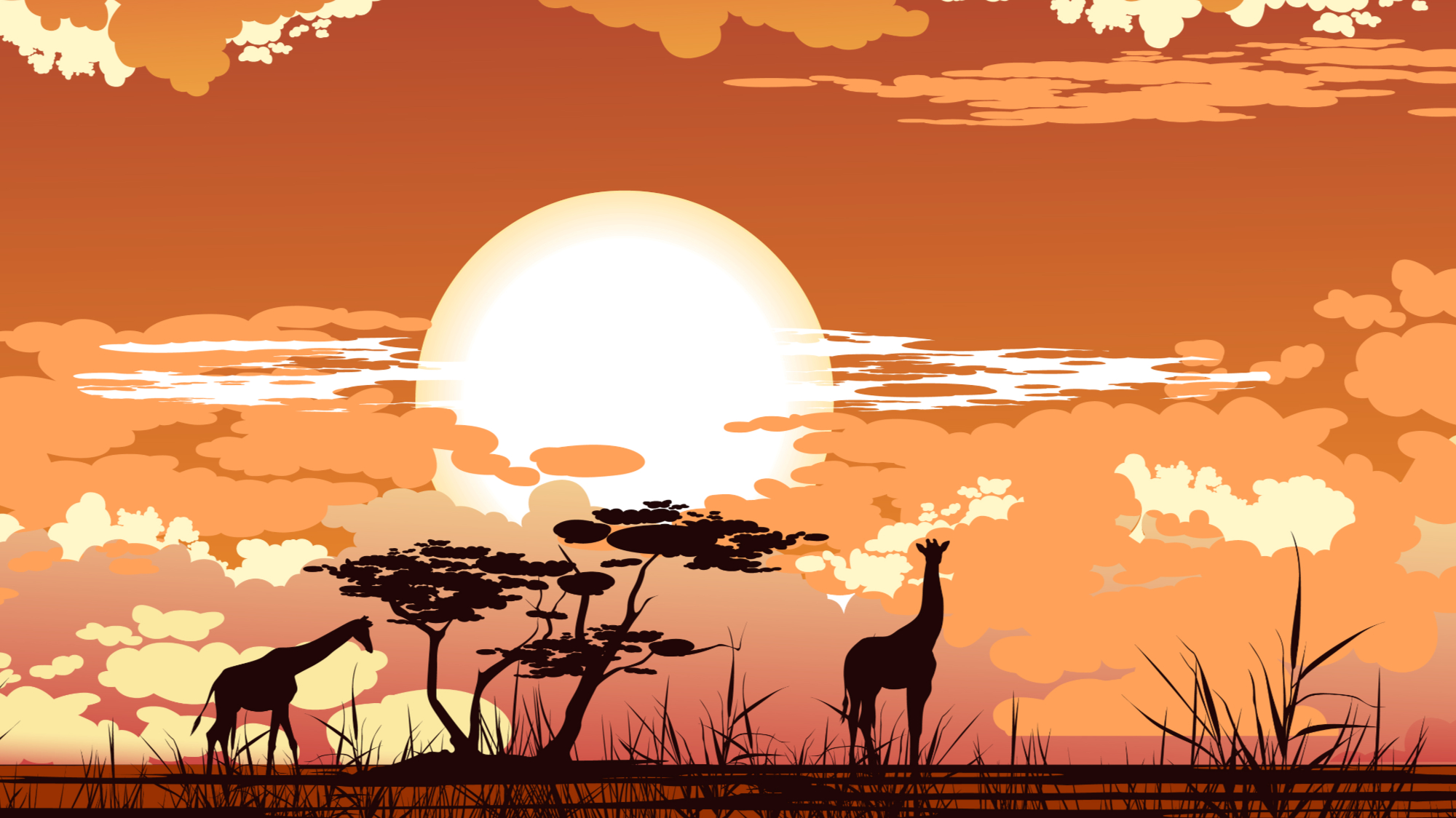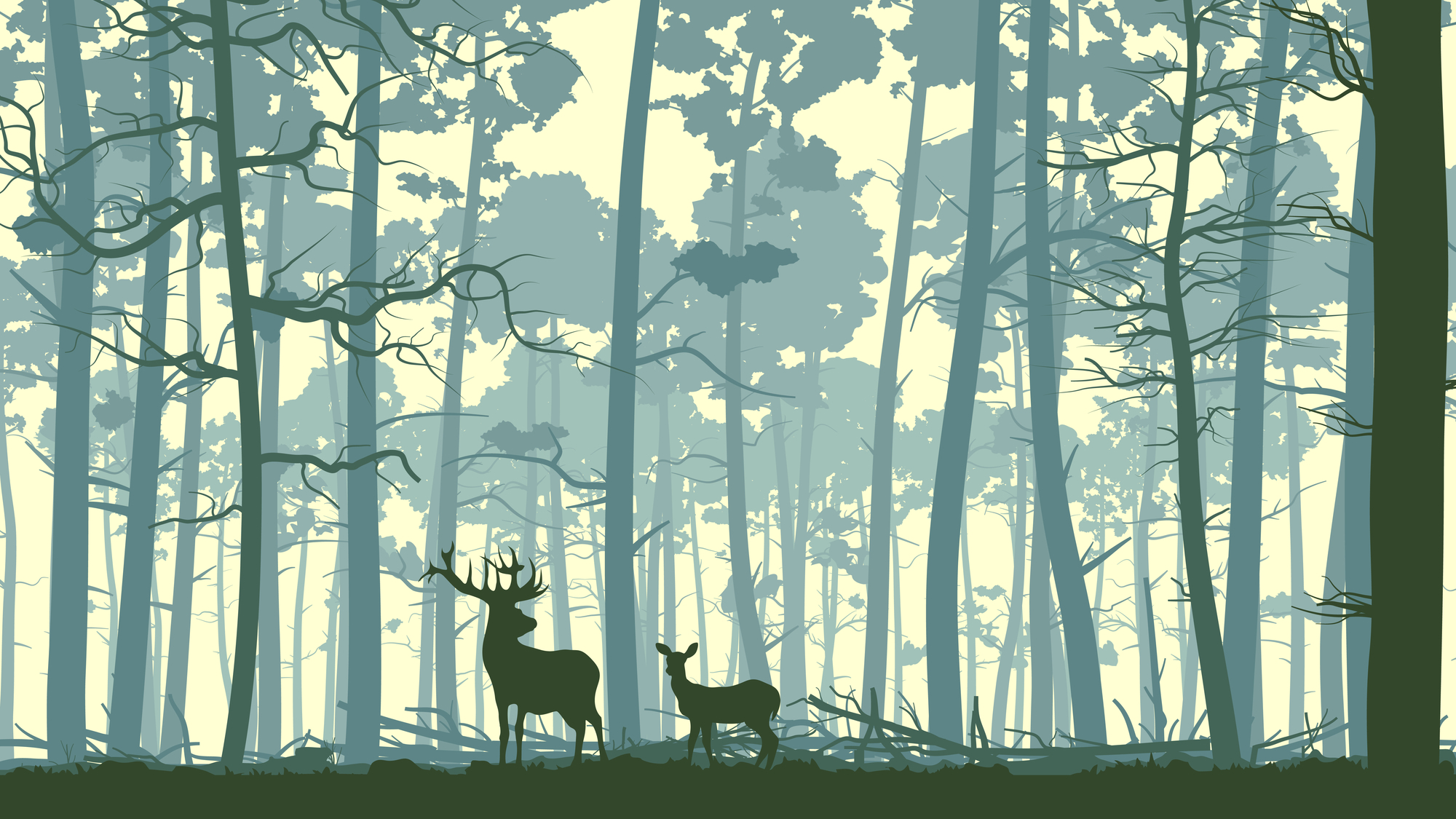
WHAT IS THE AUTHOR ECOSYSTEM?
After working with thousands of authors to help turn their love of writing and publishing into a sustainable career, we have observed five clear and unique publishing ecosystems (or archetypes) that closely align with author success. We believe that identifying your ideal author ecosystem and focusing on marketing actions that work with your natural tendencies is the surest path to thrive as an author.
We’ve mapped these archetypes onto the five ecosystem biomes on Earth (desert, grassland, tundra, forest, and aquatic) to provide a clear, easily visualized metaphor for each type and linked them to successful publishing strategies that work best for each one. We’ve also identified healthy and unhealthy habits for each type and have developed guidance to create a healthy ecosystem and foster a sustainable author career using strategies that align with your natural strengths.
While we’ve created this framework to work across the entire publishing cycle, including craft and mindset, our focus remains on sales and marketing, and this is where we think we can help people create individualized plans for themselves the most.
Some of the questions we hope the Author Ecosystem Archetypes can answer include:
-
Why am I struggling to turn my writing into a career?
-
What advice should I take (and what can I filter out)?
-
How can I prevent burnout while building my career?
Depending on your archetype, there will be certain things that resonate with you more than others, and different strategies will help you to thrive. The Author Ecosystem helps you identify those things that will help you most and abandon things those that don’t serve you.
Each of these ecosystems is deeply committed to fostering a devoted audience and building a supportive community for them. However, they do it in very different ways.
Only forests would find exceptional value in having a traditional Reddit forum or Facebook group and fostering interactions between their fans. Their superpower is imbuing interconnectivity between books and their career grows more successful with every member they add to the community, so of course that’s what they love.
Tundras generally like to share cool things with their audience, so creating a mailing list to curate interesting things they find is perfect for them to interact with fans around common interests. Tim Ferris has used this exact strategy for years. Tundras also love marketing in short bursts, so conventions work particularly well for them.
Grasslands create a community around a topic, as everyone nerds out about the same thing with focused attention. They build community by leading people and being there to catch them when they fall down. Content marketing is a perfect avenue for them to build community, using their own Substack, Medium, website, or another platform where they get the advantage of SEO and backlinks for years to come. Since they are always right about emerging topics, they can benefit the most from network effects, too, as the topic grows in importance and more people talk about it.
Aquatics are interested in creating lots of products to further the brand, so while they might have a community like forests do, the way they interact with them will probably be by providing new experiences to their fans, not necessarily interacting with them on a personal level.
Meanwhile, if deserts want to create a community at all (and of all the types deserts are least likely to want to do that) then they should probably join communities filled with readers where new trends are happening so they can interact directly with readers to collect data on what readers actually care about right now.
These are all communities and ways to develop deep, meaningful connections with people. They are all also equally valid depending on what works for you.

THE DESERT ECOSYSTEM
-
Most important resource: adaptability and optimization
-
Superpower: being nimble
-
Examples of deserts: Michael Anderle, James Hunter
Deserts are pliable creators who excel at writing to market and identifying hot trends that audiences want to read at any given moment. They can make unemotional business decisions and “ride a trend” by delivering on the hot tropes in the market before it vanishes. If you’ve ever met somebody who seemed to always hit the right trends at the right time, they are probably a desert.
Because deserts are good at riding trends, they need to have a few different skill sets, including strong research skills, the ability to produce quickly, and a willingness to detach—both to double down on what’s working well and to cut activity on anything that’s not working. Deserts tend to put all their sustenance in one cactus and build a highly profitable pathway for readers to sales.
Deserts tend to do great, for instance, in KU, because their superpower is being able to find what huge groups of people are searching for at any given time and deliver something those readers want while their frenetic energy is at its highest peak. This brings more money in the short-term, though it can put their business at risk if any aspect of their system—audience, money, or market forces—dries up. Many deserts balance this risk by having multiple pen names or by maintaining a freelance career on the side that they can always fall back on in tough times.
Successful deserts thrive on writing to market and rapid-releasing books, but this doesn’t work for any other ecosystem. A desert’s ability to detach from the material and write fast to trend without the need to infuse themselves into the text allows them to work faster with less mental drain than other ecosystems.
We estimate that a significant percentage of struggling KU authors are other ecosystems trying unsuccessfully to be deserts. Unfortunately, since they either incorrectly judge upcoming trends, can’t write fast enough to capitalize on trends without burning out, or infuse too much of themselves into their books to capitalize on trends, it does not work for them.
This is not helped by the fact that in order to be at the forefront of emerging niches it behooves deserts to play their cards close to the vest and observe much more than they speak.
Healthy Deserts maintain a camel hump (or several) where they can store away their “riches in the niches” to sustain them between oases where water is plentiful. They watch the warning signs that the market is changing and they pivot when necessary—to another genre, to another source of readers, or to another platform.
Unhealthy Deserts stray too far from a water source and end up thirsty when one or several of their money makers dries up. Additionally, they have a habit of “planting” a book and running away before that series can take root. Even though succulents can survive on very little maintenance, they do need to be watered well until they take root, while unhealthy deserts are always on to the next trend.
Does this sound like you? Learn more about being a desert.
Ready to go deeper? Then join us inside the Author Ecosystem membership and take your career to the next level.

THE GRASSLAND ECOSYSTEM
- Most important resource: focus
- Superpower: going deep on a topic
- Examples of grasslands: Monica Leonelle, Mal Cooper
Grasslands are focused, deep delvers who seek out popular topics that align with their interests. These are the industry thought leaders who correctly predict emerging trends and then become such experts that they literally know everything about it. Once they effectively “own” the topic, they get an outmoded benefit of both SEO and word of mouth that compounds over time.
These are the authors we follow to understand a complicated topic. Unlike deserts, who are encouraged to keep their cards close to the vest in order to maximize a trend, a grassland finds true value in explaining complex emerging trends to “own the space” and drawing attention to it so they reap the benefits of backlinks to their work and referrals from other professionals to fuel their growth.
Grasslands plant a lot of seeds to feel out a topic, but when they find something that takes root with a large potential audience, they quickly go extremely deep with it—deeper than anyone else has the energy to do. If you always turn to the same person when you need to understand the nuance of a specific topic better, they are probably a grassland.
Grasslands tend to consider every angle of their genre, niche, or topic so that when they put something out, it tends to blow people’s minds and rise to the top. Like with deserts, a key to grassland success is that they are right about the emerging trends which will captivate their audiences for years to come.
A ton of authors we speak to think they are a grassland, but no matter how much attention they give to a topic, the trend either never emerges or they don’t “own the topic” when it does. Being right and going deep are marketing tactics that grasslands use to separate themselves from everyone else in the field. Meanwhile, the sheer length of time they can talk about a topic prevents competition from emerging to challenge them.
Grasslands are capable of becoming the absolute best-in-class at whatever they do, which is why they need to choose new potential projects carefully.
Because grasslands are intense and obsessive about their chosen topic, they must stay focused to see the fruits of it. It does not serve them well to have multiple projects going at once because they don’t have the energy to devote to each one. It also doesn’t typically work for them to cross over audiences between two different interests, unlike some of the other types.
Healthy grasslands find fertile soil to take root in and grow the tallest, most epic tree in the garden. They also dedicate so much of their energy to one area that they become above reproach. Unhealthy grasslands plant a lot of seeds but never gain momentum in any one area, struggle to deliver on deadlines they’ve set for themselves, or try to plant too many trees than their ecosystem can support.
Does this sound like you? Learn more about being a grassland.
Ready to go deeper? Then join us inside the Author Ecosystem membership and take your career to the next level.

THE TUNDRA ECOSYSTEM
- Most important resource: excitement
- Superpower: building hype for launches
- Examples of Tundras: Russell Nohelty, Melanie Harlow
Tundras love to build cool things and launch them, and they are extremely well-versed in turning a ton of attention to themselves and their project for a short period of time. They are the type to study a platform and see what trends they can tap into to make their next launch bigger, and they are most likely to know how they are going to market and sell something before creating it. Once done with a project, they wipe their hands free of it and rarely think much of it again—the launch is over!
Tundras are naturally able to understand the evergreen trends in a genre and stack them on top of each other in a way that gets people super excited. While a desert focuses on current trends and leaps between them often, and a grassland focuses on emerging trends they can sink their teeth into for years, tundras generally focus on evergreen trends and find ways to use them in unique ways that will get everyone in their target market excited for a new launch.
Because Tundras survive on a feast and famine cycle, they need to be able to peel as much meat from the bone as possible. Tundras become stackers—stackers of trend, stackers of value, stackers of audience. They are comfortable with having a lot of one-off projects and comfortable with building a diverse audience that only likes a portion of their catalog—though they welcome superfans who enjoy everything, too.
This is why Kickstarter is naturally perfect for tundras—because we are launchers and know how to get a small, niche audience excited about something cool. While Kickstarter is also great for other ecosystems, tundras are naturally wired to understand how to use it. While deserts are great at riding trends and grasslands have stickiness, tundras tend to have a preternatural ability to hit #1 in the Amazon store and use that excitement to keep their books selling.
Healthy tundras have a firm understanding of their feast seasons and build safeguards to make sure there’s never a point of starvation. They also learn to connect their body of work—usually somewhat disparate projects—under one banner so that every launch offers a bigger feast on their backlist. Unhealthy tundras struggle to create enough feasts to get through the famine periods, leaving them burnt out and under-resourced before the next launch.
Does this sound like you? Learn more about being a tundra.
Ready to go deeper? Then join us inside the Author Ecosystem membership and take your career to the next level.

THE FOREST ECOSYSTEM
- Most important resource: interconnectivity
- Superpower: building engagement between all their books
- Examples of forests: Claire Taylor, Bryan Cohen, RJ Blain
Forests march to the beat of their interests and put their own unique spin on everything they do for their readers. They have a close relationship with their fans largely because they inject so much of their own personality into all their books. They could write a murder mystery, a sweet romance, or a cozy comedy and readers will gobble it up because it’s their unique take on a genre.
The biggest problem with forests is they always think they are some other ecosystem. Forests really want to be “in on the party” so they act like deserts, but they write too much of themselves in their books to maximize trends.
Forests also really like digging deep into their own nerdy interests so they think they are grasslands, but when they try to share their interests nobody cares outside their own community.
Forests also really like providing cool stuff for their audience, so they try to launch like tundras, but they haven’t stacked enough tropes to build excitement outside their own community to get people talking.
When they focus on their superpower of building interconnectivity between all their work and finding people who grok their own slant on the world, they thrive.
Because forests are multi-passionate, they tend to have multiple pen names going at once. Whereas this might overwhelm other types, Forests are good at watering each of their trees on a consistent schedule so everything grows steadily. They are extremely competent and tend to stack an impressive number of skills to deliver high-quality work across everything they do. Forests are good at being top of the class and being part of the conversation.
To do this, forests must be consistent, hard-working, and patient, as it takes time, energy, and money to stand up each of their trees (and they still need to do so one at a time to get a bit of momentum in one area before moving on to another). This is also the ecosystem that takes the longest to get momentum, so it’s very important to have at least one standout series that can draw people in as you build your community. However, once they are rocking and rolling, there is usually no stopping them.
Healthy forests survive by cross-pollinating their work across all their interests. The key connection is their personality, and their fans gravitate toward them for who they are rather than what they do or write. Unhealthy forests chase trends, focus too much on their existing community without bringing in enough new readers, and don’t pay close enough attention to the marketplace to ensure enough readers will share their interests to draw them into their ecosystem.
Does this sound like you? Learn more about being a forest.
Ready to go deeper? Then join us inside the Author Ecosystem membership and take your career to the next level.

THE AQUATIC ECOSYSTEM
-
Most important resource: vision
-
Superpower: creating a brand beyond their books
-
Examples of aquatics: Marvel, Hasbro, Star Wars
Aquatics are excited about everything and want to create an immersive experience for their fans. They know exactly what their fans want and this dictates both what they create and how they market it. If their fans want to see their bestselling novel as a comic book, they create it for them—even if they have no idea how to do a comic book.
The key with aquatics is that they are brand managers. Their loyalty is on the overall brand and servicing their fans with different types of products. Aquatics see books as a means to service fans of their brand, but they are equally excited about RPGs, pins, movies, and everything else that can exist beyond the books.
Because aquatics build their business to maximize customer lifetime value across an entire brand by leveraging many different formats, they must be competent at many skill sets, like building large stories and worlds, delegating responsibilities, building a functional team that understands the bigger vision, maintaining a strong connection to fans, and expanding slowly and as time, energy, money, and other resources allow.
Often, an aquatic is intentionally overshadowed by the brand they are growing. Usually, your first introduction to an aquatic is through one of the many tendrils they have extended pointing back to their brand. Whereas, a forest is almost always central to their brand, an aquatic often disappears into the background.
Healthy aquatics thrive by creating cool new products that both service their current audience and help them grow a larger audience in different pockets of fandom. Unhealthy aquatics create too many products without having a team in place to help share the load, spread themselves too thin and lose momentum by growing too fast, or create products they want to exist instead of focusing on what their audience wants to buy from them.
Does this sound like you? Learn more about being an aquatic.
Ready to go deeper? Then join us inside the Author Ecosystem membership and take your career to the next level.